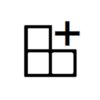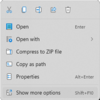BSOD Info Follows. Attached is V2 Log Collector Output.
NOTE: V2 Log Collector output could not be uploaded (size too large). Below is a link to the output placed on OneDrive.
V2 Log Collector Output
I am experiencing a Windows crash dump rather freqently - today it happened probably about 5 times or more. Note that this only happens under a very specific set of circumstances. Outside of that particular circumstance it NEVER happens.
Detailed Information:
The stop code I am receiving is precisely the same thing every time...
Stop Code: FAT_FILE_SYSTEM
What failed: volmgr.sys
Here is what I am doing when the fault occurs...
I have written a program that prepares a thumb drive and makes it bootable. The program first runs diskpart to perform a "clean" operation on the drive, then, depending upon what operation I choose, performs either a "convert gpt" or "convert mbr", creates several partitions both FAT32 and NTFS, and then copies Windows install media to the drive to make a bootable disk.
I cannot see at exactly what point the failure is occurring, but it seems that it is likely when the partitions are being created on the flash drive.
Please note I at first suspected my program as potentially being faulty, however, I have created a batch file that performs many of the same operations and the problem happens there as well.
I cannot say yet with 100% certainty, but I think that the issue only happens if the flash drive is currently GPT and I then perform a "clean" followed by a "convert mbr" on that drive. I believe that it does not happen if the drive is already using an MBR.
What I have tried:
Tried multiple different flash drives of various brands and capacities ranging from 16GB to 256GB in size.
Tried multiple USB ports, both on a hub and direct connection to PC.
Tested with all overclocking disabled.
Tested on 2 laptop running same Windows 11. Interestingly, even though both laptops are slightly out of spec for Win 11 (7th gen and 6th gen i7 CPUs), I could not get the problem to occur on those systems.
Detailed System Specs:
ASUS Prime Z590-A motherboard (FW is at latest version)
Intel Core i7-11700K CPU (11th Gen Rocket Lake / LGA 1200 Socket)
SPI TPM 2.0 module
128GB Crucial Ballistix RGB DDR4 3200 MHz DRAM (4 x 32GB)
Corsair iCUE RGB 5000X mid tower case
Noctua NH-D15 chromax.black CPU cooler
Noctua NF-S12A chromax.black.swap case fans (Qty. 7)
Corsair SP RGB Elite case fans (Qty. 3)
Corsair HX850i PSU
Seagate FireCuda 1TB NVMe Gen 4 x 4 SSD
Crucial P5 2TB NVMe Gen 3 x 4 SSD
Western Digital WD80EFAX 8TB NAS HDD (Qty. 2)
Corsair MX200 512GB 2.5” SSD
Corsair MX500 512GB 2.5” SSD
HP Envy 32 monitor featuring 32 inch 2560 x 1440 display
Edifier R1280DB powered speakers
Installed Expansion Cards:
Fenvi WiFi 6E / Bluetooth 5.2 PCIe adapter (uses Intel AX210 WiFi module) (PCIe Slot 3)
ASUS ThunderboltEX 4 PCIe adapter (PCIe Slot 4)
NOTE: No GPU installed at this time, currently using Intel Graphics on-board the CPU.
Operating System:
Windows 11 with updates through October 2021 Patch Tuesday (Oct 12, 2021).
NOTE: V2 Log Collector output could not be uploaded (size too large). Below is a link to the output placed on OneDrive.
V2 Log Collector Output
I am experiencing a Windows crash dump rather freqently - today it happened probably about 5 times or more. Note that this only happens under a very specific set of circumstances. Outside of that particular circumstance it NEVER happens.
Detailed Information:
The stop code I am receiving is precisely the same thing every time...
Stop Code: FAT_FILE_SYSTEM
What failed: volmgr.sys
Here is what I am doing when the fault occurs...
I have written a program that prepares a thumb drive and makes it bootable. The program first runs diskpart to perform a "clean" operation on the drive, then, depending upon what operation I choose, performs either a "convert gpt" or "convert mbr", creates several partitions both FAT32 and NTFS, and then copies Windows install media to the drive to make a bootable disk.
I cannot see at exactly what point the failure is occurring, but it seems that it is likely when the partitions are being created on the flash drive.
Please note I at first suspected my program as potentially being faulty, however, I have created a batch file that performs many of the same operations and the problem happens there as well.
I cannot say yet with 100% certainty, but I think that the issue only happens if the flash drive is currently GPT and I then perform a "clean" followed by a "convert mbr" on that drive. I believe that it does not happen if the drive is already using an MBR.
What I have tried:
Tried multiple different flash drives of various brands and capacities ranging from 16GB to 256GB in size.
Tried multiple USB ports, both on a hub and direct connection to PC.
Tested with all overclocking disabled.
Tested on 2 laptop running same Windows 11. Interestingly, even though both laptops are slightly out of spec for Win 11 (7th gen and 6th gen i7 CPUs), I could not get the problem to occur on those systems.
Detailed System Specs:
ASUS Prime Z590-A motherboard (FW is at latest version)
Intel Core i7-11700K CPU (11th Gen Rocket Lake / LGA 1200 Socket)
SPI TPM 2.0 module
128GB Crucial Ballistix RGB DDR4 3200 MHz DRAM (4 x 32GB)
Corsair iCUE RGB 5000X mid tower case
Noctua NH-D15 chromax.black CPU cooler
Noctua NF-S12A chromax.black.swap case fans (Qty. 7)
Corsair SP RGB Elite case fans (Qty. 3)
Corsair HX850i PSU
Seagate FireCuda 1TB NVMe Gen 4 x 4 SSD
Crucial P5 2TB NVMe Gen 3 x 4 SSD
Western Digital WD80EFAX 8TB NAS HDD (Qty. 2)
Corsair MX200 512GB 2.5” SSD
Corsair MX500 512GB 2.5” SSD
HP Envy 32 monitor featuring 32 inch 2560 x 1440 display
Edifier R1280DB powered speakers
Installed Expansion Cards:
Fenvi WiFi 6E / Bluetooth 5.2 PCIe adapter (uses Intel AX210 WiFi module) (PCIe Slot 3)
ASUS ThunderboltEX 4 PCIe adapter (PCIe Slot 4)
NOTE: No GPU installed at this time, currently using Intel Graphics on-board the CPU.
Operating System:
Windows 11 with updates through October 2021 Patch Tuesday (Oct 12, 2021).
My Computers
System One System Two
-
- OS
- Win11 Pro 23H2
- Computer type
- PC/Desktop
- Manufacturer/Model
- Home Built
- CPU
- Intel i7-11700K
- Motherboard
- ASUS Prime Z590-A
- Memory
- 128GB Crucial Ballistix 3200MHz DRAM
- Graphics Card(s)
- No GPU - CPU graphics only (for now)
- Sound Card
- Realtek (on motherboard)
- Monitor(s) Displays
- HP Envy 32
- Screen Resolution
- 2560 x 1440
- Hard Drives
- 1 x 1TB NVMe Gen 4 x 4 SSD
1 x 2TB NVMe Gen 3 x 4 SSD
2 x 512GB 2.5" SSDs
2 x 8TB HD
- PSU
- Corsair HX850i
- Case
- Corsair iCue 5000X RGB
- Cooling
- Noctua NH-D15 chromax.black cooler + 10 case fans
- Keyboard
- CODE backlit mechanical keyboard
- Mouse
- Logitech MX Master 3
- Internet Speed
- 1Gb Up / 1 Gb Down
- Browser
- Edge
- Antivirus
- Windows Defender
- Other Info
- Additional options installed:
WiFi 6E PCIe adapter
ASUS ThunderboltEX 4 PCIe adapter
-
- Operating System
- Win11 Pro 23H2
- Computer type
- Laptop
- Manufacturer/Model
- Lenovo ThinkBook 13x Gen 2
- CPU
- Intel i7-1255U
- Memory
- 16 GB
- Graphics card(s)
- Intel Iris Xe Graphics
- Sound Card
- Realtek® ALC3306-CG codec
- Monitor(s) Displays
- 13.3-inch IPS Display
- Screen Resolution
- WQXGA (2560 x 1600)
- Hard Drives
- 2 TB 4 x 4 NVMe SSD
- PSU
- USB-C / Thunderbolt 4 Power / Charging
- Mouse
- Buttonless Glass Precision Touchpad
- Keyboard
- Backlit, spill resistant keyboard
- Internet Speed
- 1Gb Up / 1Gb Down
- Browser
- Edge
- Antivirus
- Windows Defender
- Other Info
- WiFi 6e / Bluetooth 5.1 / Facial Recognition / Fingerprint Sensor / ToF (Time of Flight) Human Presence Sensor

















